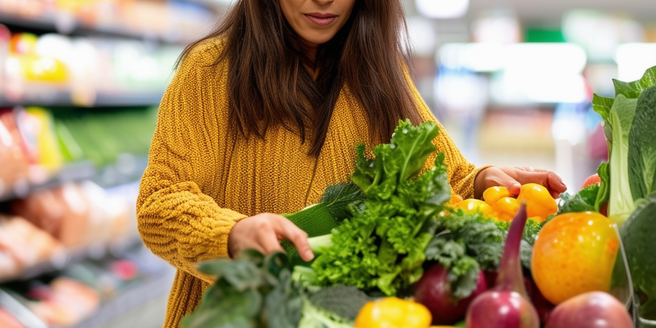Introduction to SNAP and Its Impact on Nutrition
The Supplemental Nutrition Assistance Program (SNAP) is a governmental initiative aimed at reducing hunger and improving nutritional outcomes among low-income individuals by allowing them access to a range of food items. With an annual expenditure above $60 billion, the program assists approximately 40 million Americans with food purchases each month.
Though the program’s influence on nutrition is complex due to its broad food selection, its flexibility is designed to encourage a balanced diet. This diverse range of options allows recipients to opt for food and drinks that suit their dietary preferences and needs. However, variability in the nutritional value of the available foods can lead to different outcomes for recipients, as some may choose less healthy options. This necessitates continued monitoring, research and policy adjustments to optimize SNAP’s positive impact on the nutritional health of low-income Americans.
Analyzing the Nutritional Quality of SNAP Eligible Foods
The United States Department of Agriculture (USDA) through its Food and Nutrition Service (FNS) body monitors the regulations related to the Supplemental Nutrition Assistance Program (SNAP). A diverse range of food items are eligible within SNAP, extending to seeds and plants that can potentially produce food at home. However, hot foods ready for immediate consumption, vitamins, supplements, and non-food items related to hygiene and personal supplies are excluded from SNAP’s coverage. While benefiting a wide demographic, the quality of nutrition varies among the SNAP-eligible foods due to the diverse nature of the eligible items. It’s essential to understand that despite the program’s inclusivity, these non-food items are excluded, aiming to cover only food items.
How SNAP Influences Dietary Choices and Habits
The Supplemental Nutrition Assistance Program, known as SNAP, is largely associated with its beneficiaries’ eating behaviors and has been scrutinized recently for its impact on recipients’ dietary habits. Primarily designed to combat food insecurity among the low-income population, SNAP gives aid to purchase groceries and essentials, but its effects go beyond food security, playing a crucial role in determining its recipients’ nutritional intake. It’s been suggested that SNAP participation considerably influences beneficiaries’ food choices, impacting their diet.
However, a worrisome trend has been identified from several studies, indicating SNAP recipients’ unhealthy food preferences, such as high-sugar beverages and processed meats – both poor in nutrition. This propensity not only results in a high consumption of these unhealthy foods but also escalates significant public health problems. This consumption pattern adds to the risk of non-communicable diseases like obesity and heart diseases, and the prevalent unhealthy diets among SNAP recipients suggest a flaw in the program, making it more of a public health concern. The strong link between SNAP participation and unhealthy eating habits emphasizes a comprehensive approach to address food security and improve diet quality.
Correlation between SNAP Usage and Nutritional Health Outcomes
Research findings on the relationship between the Supplemental Nutrition Assistance Program (SNAP) and health outcomes related to nutrition have been inconsistent. Some studies and analysis indicated a connection between SNAP usage levels and health metrics, yet inconsistencies led to varied interpretations. It is suggested that SNAP participants experience reduced food insecurity, likely due to increased certainty of accessing food. This cannot be understated, given SNAP’s role in alleviating food distress among the nation’s lower-income population.
A paradox arises from the data: SNAP enrollees show higher body mass indices and increased obesity rates. This suggests that while SNAP facilitates food access, the nutritional quality might be subpar. Thus, SNAP may inadvertently encourage obesity-contributing dietary habits. Policymakers face the challenge to enhance the nutritional impact of SNAP, aiming not merely to lessen food scarcity but to tackle escalating obesity rates and foster healthier eating habits. A holistic approach is required, ensuring food availability yet promoting consumption of healthy, nutritious food. The conflicting outcomes present a unique challenge: improving nutritional status while managing obesity rates among SNAP recipients.
Ways to Improve Nutritional Values within the SNAP Program
The proposed policy changes aim to enhance nutrition among Supplemental Nutrition Assistance Program (SNAP) beneficiaries. This could be achieved by restricting the purchase of certain unhealthy foods, promoting healthy eating habits and combating obesity and other health-related issues. The policy also seeks to incentivize the purchase of healthier options such as fruits and vegetables through economic stimuli, potentially leading to a widespread adoption of a healthy diet among recipients.
Introducing nutrition education and cooking classes as part of this policy provides SNAP beneficiaries the necessary information and skills to consciously make healthier dietary choices. The knowledge of the importance of nutrition and how to prepare nutritionally rich meals could lead to a shift in food consumption patterns.
The goal of these policy changes is to enhance the program’s nutritional impact by creating an environment conducive to healthy eating among SNAP participants. By influencing individual choices, the policy could affect the health and wellbeing of the entire SNAP community. If successfully implemented, this form of direct intervention could revolutionize SNAP’s contribution to public health, making it a vital tool in the fight against nutritional deficiency and related health issues.



